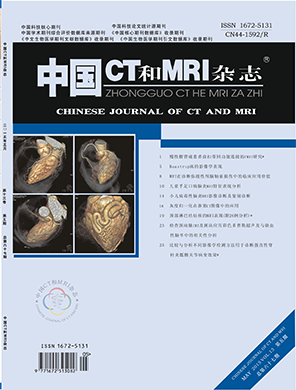Head and Neck Imaging
The Preliminary Application of Bidirectional Venography in Deep Venous Thrombosis of Lower Limbs with Dual Source CT
Author:WANG Shao-juan1 , WANG Li-wei2 , GU Jian-ping2 , YIN Xin-dao2
affiliation:1 Jiangsu Hospital of Traditional Chinese Medicine, Nanjing 210029, China; 2 Nanjing First Hospital, Nanjing Medical University, Nanjing 210006, China
PDFAbstract
Objective To evaluate the feasibility and clinical value of the bidirectional lower extremity venography (CTV) with dual-source CT. Methods 63 patients underwent CTV checks.In the bidirectional CTV, contrast agent was injected via the left cubital vein and dorsal venous, respectively, scanning was started after 2.5 minutes of the beginning of injection. In indirect CTV the contrast agent was injected through the cubital vein, the scan was started after 2.5 minutes of the beginning of injection. In the direct CTV, 60ml diluted contrast agent was injected via the diseased dorsal vein, the rate 1.5ml/ s, scanning started after 1 minutes of the beginning of injection.Ddual-energy scanning protocol was uniformly applied with the voltage ratio 0.5 of 100kV and Sn140kV, CareDose4D automatically tracking total of 108 lower limbs and 324 vascular segments. Results DVT were detected in 125 segments with DSA and in 121 segments with CT, current, collimator width 128x0.60mm, tube rotation 0.33s. 63 cases with DVT have a the total detection rate of DVT with CT was 96.80%. The bidirectional CTV can improve the contrast of veins and eliminate the side flow effects, image quality is better than the indirect and the direct CTV. Conclusion The bidirectional CTV is a feasible method of lower extremity venography and can compensate for disadvantages of the indirect and direct method.
【Keyword】Vein; Thrombosis; Tomography, X-ray Computed; Angiography
【Chart number】R543.6;R445.3
【Document Identification Number】A
【DOI】10.3969/j.issn.1672-5131.2015.05.011
Chinese journal of CT and MRI
th13Volume, th 5 Issue
2015Year05Month

Related articles